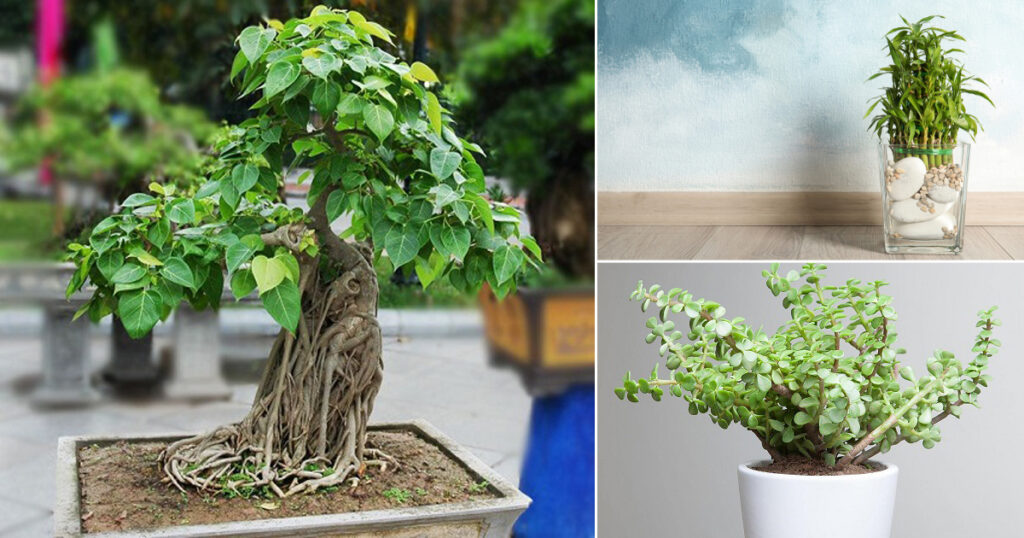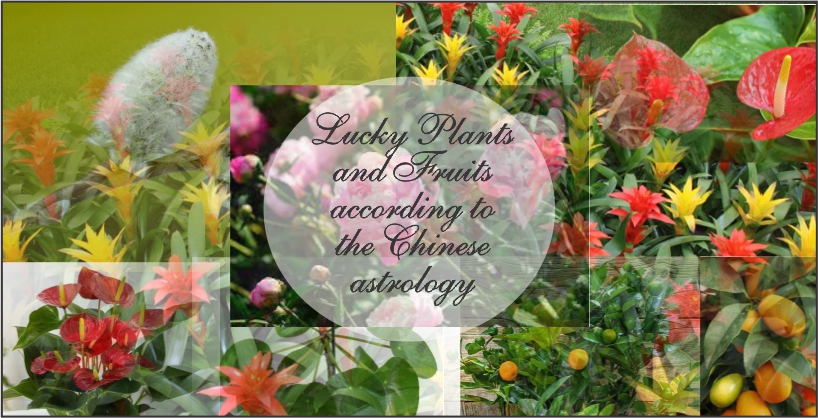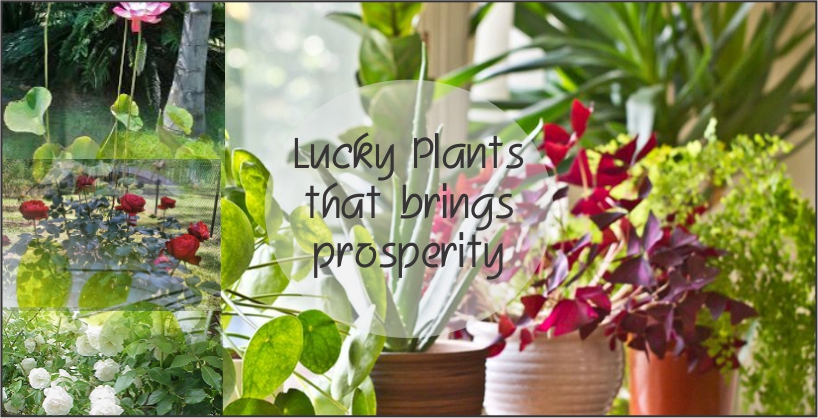In Astrology, it is believed that stones, meditation, sound, or food increase the prosperity of an individual. Plants were not given much attention in astrology some years ago as it is given now. There are various plants that are considered lucky according to the star signs. There are plants that could accuse distress in the life of an individual while there herbs that could give a calming effect to them. In this blog, the types of lucky plants according to astrology will be discussed that have both positive and negative effects on a person.
Lucky Plants as per the zodiac signs
According to the twelve zodiac signs of astrology, there are plants and herbs that are considered to be auspicious. They are discussed in chronological order

- Aries: Cactus, Honeysuckle, Thistle, Hollyhocks, and Succulents
- Taurus: Rose, Columbine, Ferns, and Poppy
- Gemini: Lavender, Daffodil, Lilly of the Valley, and Philodendron
- Cancer: White roses, Morning Glory, Lotus, Peace Lily or it could be any white flowers
- Leo: Sunflower, Marigold, Heliotrope, Dahlia, and Areca Plam
- Virgo: Chrysanthemum, Buttercups, Eucalyptus and Sansevieria
- Libra: Gladiolus, Tea Roses, Mint, Bluebells, and Dracaena
- Scorpio: Hibiscus, Heather, Red Geranium, Spider Plants, and Black-Eyed Susan
- Sagittarius: Carnations, Moss, Peonies, Sage, and Fiscus Bonsai
- Capricorn: Jasmine, Ivy, Pansy, African Violet, and Aglaonema
- Aquarius: Orchid, Aloe, Bird of Paradise, Pitcher Plant, and Money Plants
- Pisces: Water lily, Clematis, Narcissus, Clematis, Madonna Lily, and Lucky Bamboo
Lucky trees As Per The Indian Rashi Chakra
There are some of the trees found on earth that are considered to be lucky according to the Indian Rashi chakra.

- Mesh: Red Sandalwood
- Vrishabh: Papaya or Saptaparni
- Mithun: Aloe Vera or Jackfruit
- Kark: Palas
- Singha: Kaligottu
- Kanya: Aloe Vera or Mango
- Tula: Bakul
- Vrischik: Khair
- Dhanusu: Mango, Peepal, or Banana
- Makar: Neem
- Kumbh: Sheesham or Jacaranda
- Meen: Mango, Banyan or Banana
Lucky Plants Associated With The Planets

- Sun: Arka known as Mudar and Bael known as Wood Apple Tree
- Moon: Dhak or Butea and Khirni or Ceylon Ironwood
- Mars: Khaira better known as Marshmellow and Anantmool better known as Indian Sarsaparilla
- Mercury: Apamarga or Prickly Chaff and Vidhara Root
- Jupiter: Peepla or Peepal Tree and Banana Root
- Venus: Gular known as Cluster Fig and Sarpankhi Root
- Saturn: Shami or Cikura Pod
- Rahu: Durva or Burmuda Grass and Sandalwood
- Ketu: Kush better known as Cannabis
Lucky Plants Related To The Indian Gods
1) Peepal
Also known as the Bodhi tree represents the root represents Lord Brahma, the trunk represents Lord Vishnu and the leaves represent LordShiva. It is auspicious that the red cloth is tied at the time of worshipping it.
2) Banyan
The banyan tree represents Lord Krishna. This tree is found mainly near the temples
Bael: The Bael tree is associated with Lord Shiva. The Hindu ceremonies are incomplete without the usage of the bael leaves and fruits. It is essential for the Indian women to break their fast by having the fruit of this tree.
3) Ashoka
Ashoka tree is considered to be the sign of Kama deva or the lord of love. It is evergreen and has fragrant flowers.
4) Mango
The fruit of the mango tree is the emblem of purity and fertility. The leaves of this tree are used on auspicious occasions and the tree is also mentioned in the epics of Ramayana and Mahabharata. It is also mentioned in the Hindu Puranas.
5) Neem
The need tree is associated with the Goddess Durga. This tree is also considered to keep spirits away.
6) Banana
The tree is represented by Lord Vishnu and Ganesha. This tree is highly considered to be auspicious for every Indian occasion.
7) Coconut
Down south India, this tree has significant importance. This tree is planted in almost every household and is used on every occasion.

8) Lotus
This plant is considered to be the emblem of goddesses Laxmi and Saraswati along with Lord Brahma.
9) Sandalwood
Sandalwood is considered to be used for worshipping Lord Vishnu and Lord Shiva. It is also one of the costliest and most sacred trees of the Indian subcontinent.
10) Star Jasmine
Star Jasmine is also known as Kunda is related to Lord Vishnu. It is an essential part of the Indian marriage ceremonies.
11) Kadamb
This tree is represented by lord Krishna and also by Goddess Durga.
12) Champa
Champa is also considered to be the sign of Kama Deva. it has a vibrant color with an alluring smell it also represents Lord Krishna.
13) Tulsi
This plant is the holiest of all the plants and is present in almost all households. It is the sign of Lord Vishnu. The parts of the plants are used by the yogis for purification of mind and soul.
14) Parijaat
This tree is associated with the epic of Mahabharata. This tree is also believed to be carried with Lord Krishna.
Lucky Plants And Fruits According To The Chinese Astrology
There are plants that are considered to be auspicious according to Chinese astrology. They are

- Bromeliad
- Anthurium
- Pilea
- Calamondin Orange
- Kumquat or Tangerine
- Pussy Willow
- Peach or Plum Blossoms
- Peonies
- Water Fairy or Narcissus
- Flamingo Lily
- Oranges
- Pomelos
- Apples
- Watermelons
- Gra
Also Read: Healing of the Chakras To Heal The Spiritual Self
Trees According To The Nakshatra
According to Vedic astrology, a person could be free from physical ailments or mental distress by planting trees or herbs according to the person’s nakshatra. Thus it is still considered to be an auspicious moment to worship a tree or even water it before any family event. There are 27 nakshatras or constellations according to Indian astrology.

The lucky plants or trees that are considered to be lucky according to these nakshatras are
- Ashwini: Kuchla tree is the important tree of this nakshatra. Offering water and going around this tree eleven times may remove any obstacles to life.
- Bharani: Indian Gooseberry is the tree of this constellation. Kumkum needs to be offered to this tree every day or meditation under this tree could be beneficial.
- Krittika: Cluster Fig is the important tree of this nakshatra. Every Friday the natives could go around this tree seven times to get the maximum benefit from this tree.
- Rohini: Jamun tree is the ruling tree of his nakshatra. Sugar and wheat can be offered to the roots of this tree which could provide good results to the natives.
- Mrigshira: Acacia is the tree of this constellation. Offering water every Wednesday executes good results. The plant should be kept outside the house.
- Adra: Krishna Kamal is the ruling tree of this nakshatra. The natives could offer grass or durba to the tree to the fulfillment of their wishes.
- Punarvasu: Babool is the ruling tree of this nakshatra. A few leaves of this tree could be consumed by the natives for beneficial results.
- Pushya: Sacred Fig or popularly known as Peepal is the ruling tree of this constellation. The natives need to water the tree and offer sugar by going around the tree regularly except on Saturdays.
- Ashlesha: Champa is the tree of this nakshatra. The natives could sit in the shade of this tree or keep the fruit of this tree in their locker to get positive results.
- Magha: The banyan tree is the auspicious tree of this nakshatra. The natives could circumvent the tree to get positive results.
- Purba Phalguni: Ashoka is the ruling tree of this constellation. The natives could pluck eaves mostly seven on Monday to keep them in the locker.
- Uttara Phalguni: Khejdi is suggested for this nakshatra. It is auspicious for the natives to offer sesame seeds or fruits to these trees.
- Hasta: Jasmine is the auspicious plant for this nakshatra. The natives need to offer water and keep nine leaves from this tree at their house.
- Chitra: Bael is the ruling tree of this nakshatra. Offering water is considered to be beneficial.
- Mool: The ruling tree is considered to be Bael. the natives are suggested to offer water to the tree. The meritorious students could also offer the leaves of this tree to lord shiva for better results.
- Swati: Arjun tree is ruling this native. It is suggested that the natives could touch the tree regularly and keep the bark of the tree with them.
- Vishakha: Ironweed tree is the ruling the nakshatra. The natives could plant the trees inside their houses and everyday sprinkle milk on the roots.
- Anuradha: The ruling tree of these natives is ironwood. The natives can sprinkle milk on the roots of the tree every day.
- Jyeshtha: Neem is the focus tree of this nakshatra. It is considered to be beneficial for the natives to pay for sweets or sugar on the roots. It is also useful for the natives to touch the tree every day.
- Purvashada: Ashoka tree is associated with this nakshatra. Every Wednesday the natives can offer turmeric on the roots
- Shravan: Ashoka tree is the ruling tree for these natives also. They could also water the roots and break them for use.
- Uttaraashadh: Jackfruit is beneficial for the people of this nakshatra. The need to sit in the shade of this tree and meditation under this tree could be beneficial.
- Dhanishtha: Coconut is the ruling tree of this nakshatra. So, planting this tree could be beneficial inside the house.
- Shatbhisha: Kadamba tree is ruled by this nakshatra. It is believed that people could share their secrets with this tree to drive their problems from their lives.
- Uttara Bhadrapada: The auspicious tree of this nakshatra is the neem tree.
- Purva Bhadrapada: This nakshatra person should worship mango trees and nurture them.
- Revati: ruled by Mahua which should be planted outside the house and keep sweets under the tree on every full moon day.
Lucky Plants Based on Astrological Signs/Elements

- Fire: The fire signs of astrology are Aeris, Leo, and Sagittarius. The natives express bold personalities and seek attention and the spotlight. The plants of this sign are Calathea Dottie (Aeris), Monstera Deliciosa (Leo), and coffee (Sagittarius).
- Earth: The earth signs of astrology are Taurus, Virgo, and Capricorn. The natives are self-sufficient and spend time themselves so they could survive for less. The plants of this sign are Satin Pothos (Taurus), Echeveria (Virgo), and Haworthias (Capricorn).
- Air: The air sign of astrology are Gemini, Libra, and Aquarius. The natives do not follow any specific pattern and follow their own path and pace. The plants of this sign are Marble Pothos (Gemini), Bird’s Nest Fern (Libra), and Pilea Peperomioides (Aquarius).
- Water: the water signs of astrology are Cancer, Scorpio, and Pisces. The natives are secretive and have the sign of mood fluctuation. They are also daydreamers and can imagine to a great extent. The plants of this sign are All Ficus (Cancer), Philodendron Green (Scorpio), and ZZ Plant (Pisces).
- Metal: The natives of this element have a sharp array that makes them self-sufficient they could be harsh and flourish as they are challenged. The plant of this element is Succulent Assortment
- Wood: The natives of this element are solid and have deep roots. They are grounded and have a steady presence. Parlor Palm is a plant that can adapt to changing environments. It has a calming effect that could provide balance to the demanding behavior of the natives.
Avoiding The Plants That Could Create Malefic Effects On Life

Some of the plants need to be avoided by keeping them inside or on the house premise. They are Bonsai, thorny plants, cotton, Mehendi, Tamarind, Babul, Palm, Bamboo (according to the Indian astrology) creepers or climbers, and dead and decayed plants.
Some Of The Facts About Money Plants According to Vastu

According to astrology and Indian Vastu, money plants are considered to be one of the auspicious or lucky plants that bring prosperity and provide protection from any kinds of financial losses. However, people don’t know about the placement and maintenance of this plant to get the utmost benefit from it.
These are the plants that are very easy to maintain and do not require any special care or treatment. It can be kept in bottled water or soil but it is believed that there are some directions and basic maintenance care to be given to avoid negative effects.
- Not To Gift Money Plants To Others: People often gift money plants to others as it has less maintenance cost. But the person who is gifting it would believe to anger planet Venus as it is the sign of prosperity and blessings.
- Direction To Keep The Money Plants: These plants should be kept in the South-East direction as it is the direction of Lord Ganesha who is the symbol of blessings and prosperity. The North-Eastern side of the house should be avoided for these plants as it could lead to financial loss. These plants should also be placed inside the house. They do not need much sunlight and easily dries if placed outside the house.
- The Plant Should Not Get Dry: The money plants need water and it is to be ensured that these plants could bring misfortune and affects the financial condition of the family if not watered on regular basis. It is believed that the money plant should grow in an upward direction. It should not touch the ground as according to Hindu astrology this plant is believed to be the symbol of Goddess Laxmi.
Written By: Manashi Dey
(Disclaimer: This article is from the author’s perspective. Kindly do check with experts before following. newsnetnow.com will not be responsible for any kind of inconvenience and incorrect or misleading information.)

















